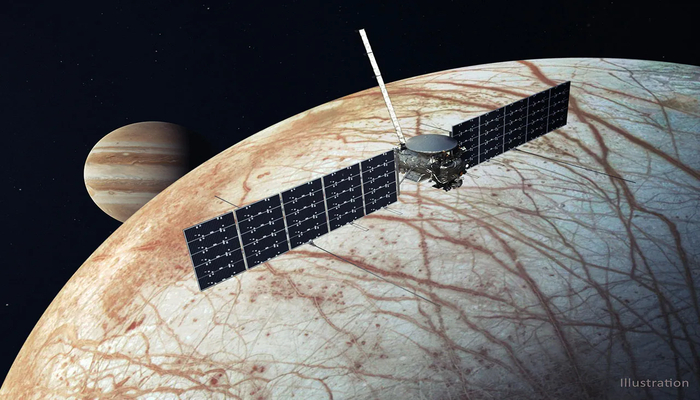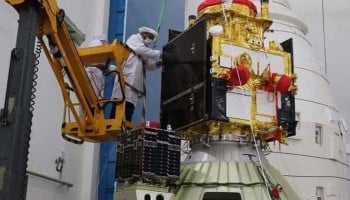
In a bid to explore and assess whether alien life exists on Europa, Jupiter's icy moon, NASA launched its Europa Clipper aboard a SpaceX Falcon Heavy rocket.
The liftoff was carried out in Cape Canaveral, Florida, on Monday.
The Europa Clipper embarked on a 1.8-billion-mile journey to execute Earth's first insightful investigation which will take five-and-a-half-year to reach the solar system's largest planet.
NASA's Europa Clipper lifted off for Jupiter's moon
“NASA has officially retired a tremendous amount of risk on the mission,” said Europa Clipper project manager at NASA’s Jet Propulsion Laboratory Jordan Evans.
The journey will not advance in a straightforward manner, as next year Clipper is set to receive a gravity assist by sling-shotting around Mars. This thrust from Mars will then be followed by boomeranging back around Earth in late 2026 ahead of its voyage en route to Jupiter and its dynamic moon.
Scheduled to reach its destination in 2030, the spacecraft will collect data for over four years, followed by a flight to one of the gas-made planet's rocky moons to save Europa from contamination.
Delay on NASA's Europa Clipper mission for Jupiter's moon
The mission's propulsion was originally scheduled for October 10, but owing to Hurricane Milton, it was delayed with the spacecraft put to stand-by mode at SpaceX’s hangar to ensure safety from the devastating tropical cyclone.
After the skies atop Florida’s space coast were clear, NASA's Europa Clipper set out for its billion miles expedition.
















